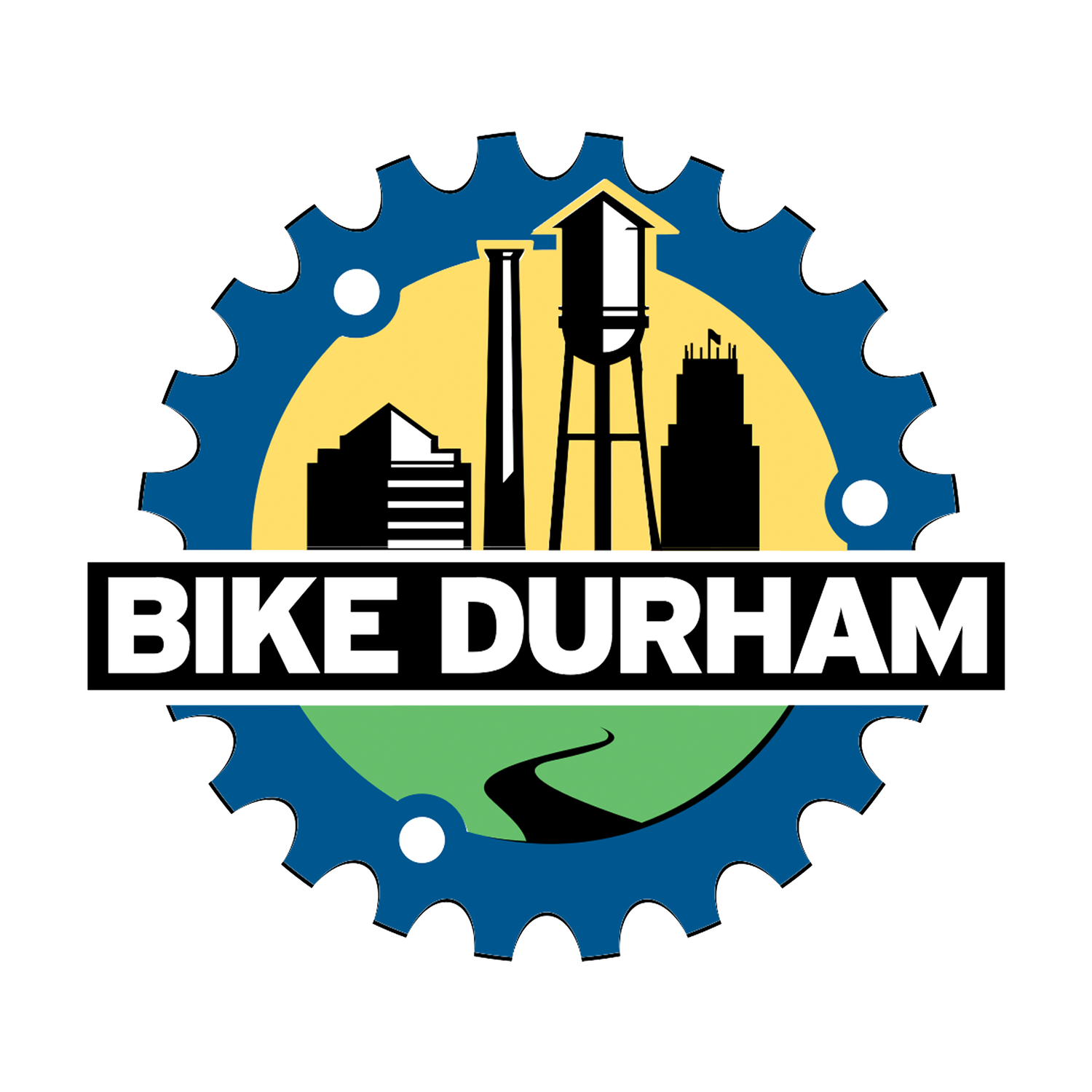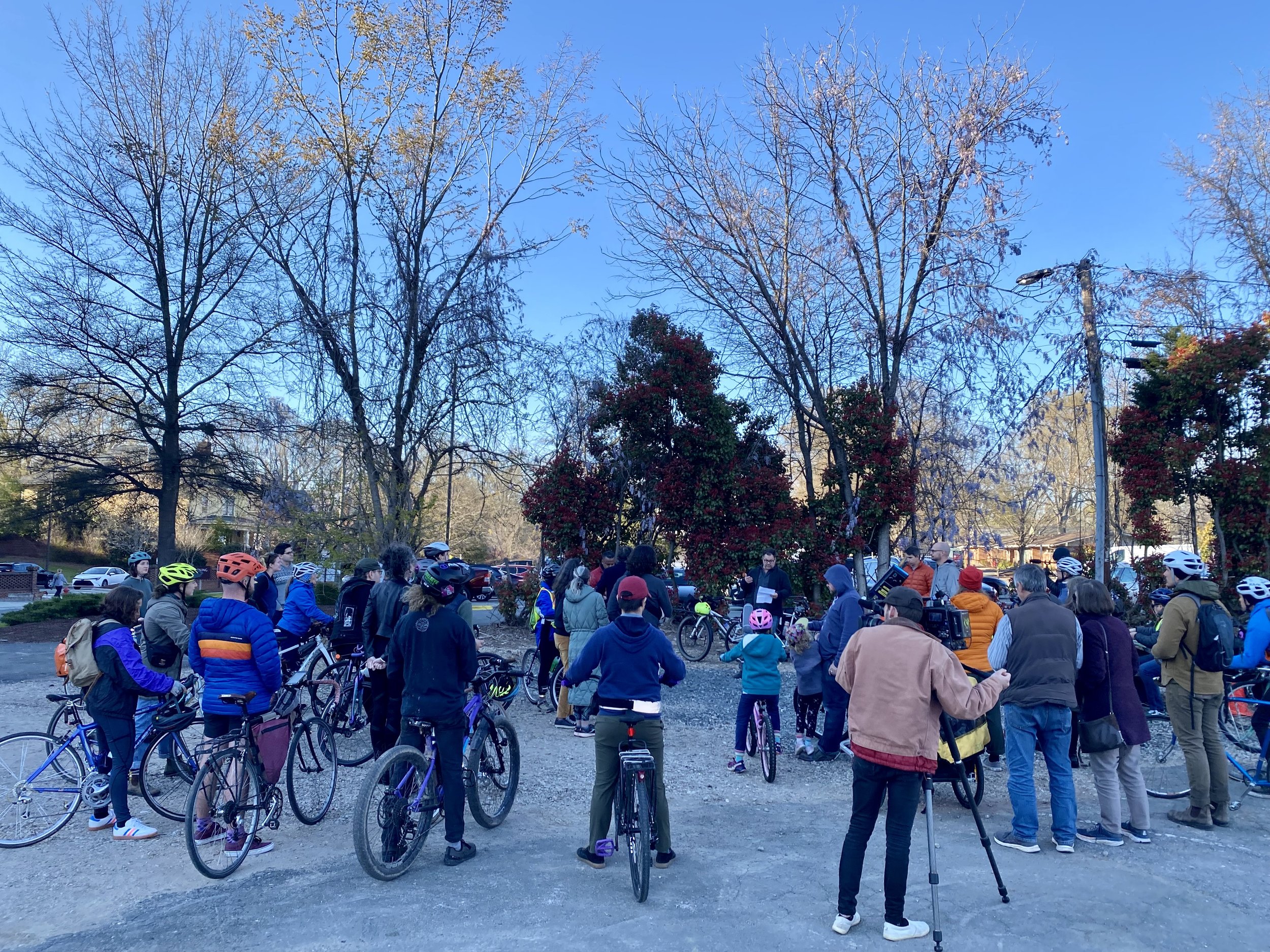Remembering John Allore
As I was preparing to write this post last Thursday about our Vision Zero Durham rally and comments at the City Council public hearing on March 20, I heard the tragic news that John Allore, Durham’s budget director, had been killed while riding his bike in western Orange County. I had known John from my years working at GoTriangle and more recently through Bike Durham’s advocacy on City budget priorities. My impression of John was always that he was genuine, caring, and good at his work for the City. I was also always interested to hear about his acting, too. He was an avid bike rider, both for recreation, and as a commuter (bike-bus-bike from Carrboro to Durham).
I have been in touch with some of his family, as well as his colleagues at the City, about whether there is support we can offer to honor John’s memory. We are also coordinating with advocates in Chapel Hill and Carrboro, where John lived. As a reminder to all, we will host the annual Ride of Silence on Wednesday, May 17 at 6pm, starting downtown at CCB Plaza.
John’s death is yet another tragic reminder that the time is past due for the local, regional, and state governments to change our approach to transportation to Vision Zero.
Calling for Vision Zero Durham at City Hall
On Monday, March 20th, nearly fifty people gathered at the intersection of W. Main, Morgan, and Watts Streets to rally for safer streets and to protect one another as we rode to City Hall for the public hearing on the budget. BIke Durham Advocacy Committee Co-Chair Erik Landfried remembered Tysiea Gurley and Mike Possley who had both been killed recently while crossing Durham streets. He also spoke about the serious injuries suffered by Noah Goyette when the bike lanes on West Main Street were blocked by idling cars and he hit a pothole when swerving to avoid the cars. On behalf of Bike Durham, Erik called for the City to invest in a Vision Zero Durham agenda:
Fund a full-time, dedicated Vision Zero Coordinator. The person in this position will lead an interdepartmental, interdisciplinary team in identifying, prioritizing, and implementing measures to reduce traffic deaths and serious injuries. It’s important to hire this position now as a Vision Zero Action plan will be developed later this year.
Fund the repair of existing sidewalks, bring curb ramps up to ADA standards and convert all existing bike lanes into protected bike lanes.
Provide annual funding commitments for traffic calming and the completion of safe city-wide sidewalk and protected bike lane networks.
Residents, many with their bikes, gathered to rally for safer streets.
Brian Hawkins spoke on behalf of the Durham Bicycle & Pedestrian Advisory Commission (BPAC), stating, “...what we are asking for is the city to prioritize the usability and safety of the infrastructure in which we have already invested. Bike lanes are a welcome addition to our cityscape, but it is clear that simply painting a stripe on the road is not sufficient. In fact, we would argue that a bike lane that is suddenly and unpredictably unavailable creates a more dangerous situation than no bike lane at all, which we saw right here last month.
We call on the City Council to prioritize the following to address this issue:
1. The addition of physical barriers to existing bike lanes
2. More consistent enforcement of parking restrictions
3. A program and policy whereby the City conducts public visits to sites of serious and/or deadly crashes involving pedestrians or cyclists, and produces crash memos that describe how similar tragedies can be avoided in the future”
Following the media event, we created a cyclist-protected bike lane to start our ride to City Hall for the public hearing. Seven of us signed up to speak to Council in support of the Vision Zero Durham agenda. I highly encourage you to watch the remarks made at this link. In addition to powerful comments in support of the Vision Zero approach to traffic safety, there were others advocating for expansion of the community safety department, known as the HEART program.
We received excellent media coverage, including CBS17, WRAL, News & Observer, IndyWeek, and 9th Street Journal.
Why Do We Advocate for Vision Zero?
Bike Durham was incorporated ten years ago as a voice for residents who wanted streets safe for people on bicycles. We have since broadened our vision to a transportation system that is safe, affordable, and sustainable for everyone, regardless of who they are or where they live. One key approach to achieving this vision is known as Vision Zero.
According to the Vision Zero Network, Vision Zero is a strategy to eliminate all traffic fatalities and severe injuries, while increasing safe, healthy, equitable mobility for all. First implemented in Sweden in the 1990s, Vision Zero has proven successful in communities across Europe — and is now gaining momentum in American cities and states.
Vision Zero is not just a catchy slogan. It is a fundamentally different approach to thinking about our transportation system.
Again according to Vision Zero Network, Vision Zero is a significant departure from the status quo in two major ways:
This approach recognizes that people will sometimes make mistakes, so the road system and related policies should be designed to ensure those inevitable mistakes do not result in severe injuries or fatalities. This means that system designers and policymakers at the city, state, and federal levels are expected to improve the roadway environment, policies (such as speed management), and other related systems to lessen the severity of crashes.
This approach is multidisciplinary, bringing together diverse and necessary stakeholders to address this complex problem. In the past, meaningful, cross-disciplinary collaboration among local and state traffic planners and engineers, policymakers, and public health professionals has not been the norm. Vision Zero acknowledges that many factors contribute to safe mobility — including roadway design, speeds, behaviors, technology, and policies — and sets clear goals to achieve the shared goal of zero fatalities and severe injuries.
More is described in Vision Zero Network’s document Core Elements for Vision Zero Communities and their recorded webinar Vision Zero 101.
Here in Durham, the City Council adopted a Vision Zero resolution back in 2017, following the adoption of a Vision Zero program at the state level in 2015. Our regional transportation organization also adopted a goal of zero deaths and serious injuries by 2050. The goals have been set, but the paradigm shift has not occurred. In recent meetings with NCDOT engineers, it is clear that safety is not yet prioritized ahead of minimizing traffic delay. We still hear City staff putting too much emphasis on the behaviors of people driving, walking, biking, or rolling, and accepting enough responsibility for the changes that they could make to our streets to encourage slow speeds and safe spaces for everyone to use our streets.
We need our City leaders to recommit to Vision Zero through this year’s budget by approving:
Funds for a full-time, dedicated Vision Zero Coordinator. The person in this position will lead an interdepartmental, interdisciplinary team in identifying, prioritizing, and implementing measures to reduce traffic deaths and serious injuries. It’s important to hire this position now as a Vision Zero Action plan will be developed later this year.
Funds for the repair of existing sidewalks, bring curb ramps up to ADA standards and convert all existing bike lanes into protected bike lanes.
Annual funding commitments for traffic calming and the completion of safe city-wide sidewalk and protected bike lane networks.
You can sign our petition in support of the Vision Zero Agenda and share it with your friends. Our goal is 500 signatures by April 30.



